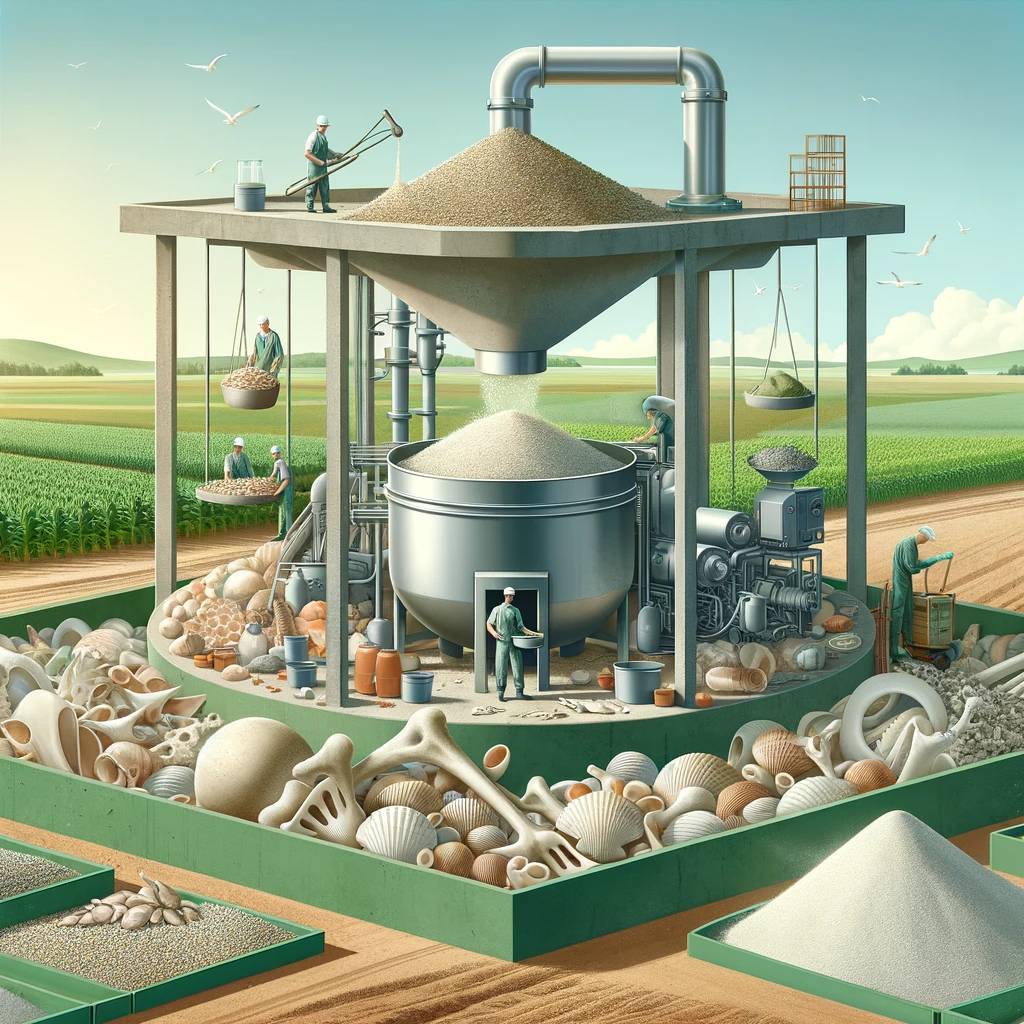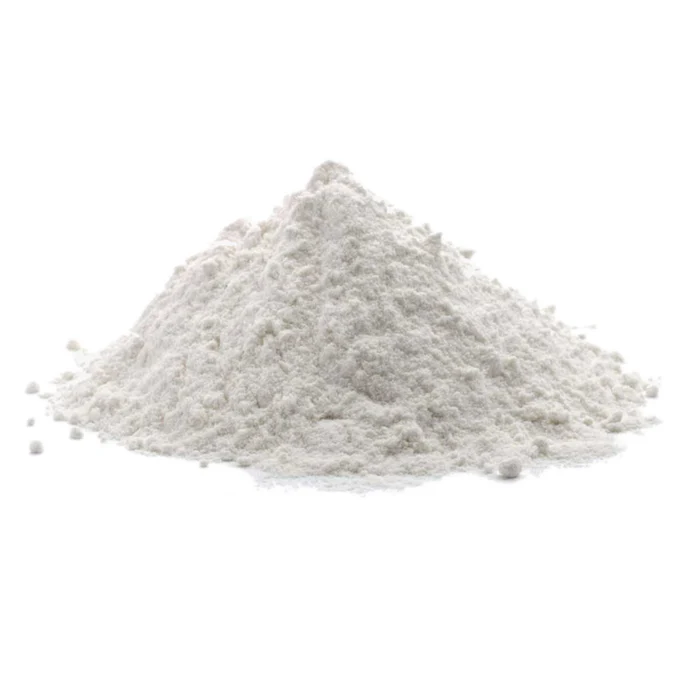Introduction to Organic Calcium Fertilizer
Organic calcium fertilizer is important in modern agricultural area. It can help sustainable solution to improve soil quality and improve crop yield. It is come from natural place, no additve organic fertilizer. It can be used in organic farming.
Improved soil health is one of the most substantial benefits of unprocessed organic calcium fertilizer. It leads to better soil structure and to more microbial activity, as well as enhanced uptake of other nutrients by the crops. Calcium is one of the most important nutrients for soil health, sustaining chemical equilibrium in the soil, as well as maintaining the orderly structure of plant cell walls, thereby enhancing uptake of other [late available life-giving vital elements.
Furthermore, the use ofca mili organic calcium fertilizer increased wheat and soybean yields by 10-20 per cent: besides improving nutrient availability, organic calcium affects the growth regulating processes in vegetal organisms, promoting healthier roots development, tougher stalks, and improving photosynthetic activity. These key factors are essential to maximise crop productivity in soils prone to depletion.
Role of Calcium in Plant Health
Calcium is about more than just a plant fertilizer. It is a fundamental constituent in the composition of plant cells and tissues, and participates in many crucial processes that enable plants to grow and develop robustly and in response to stresses of a variety of environmental conditions.
Calcium is important at and between the corners of plant cell walls, binding together together the constituents so that the material of plant bodies can gain strength – not just a physical rigidity, but the ability to repel disease and pest attack. Thomas Green, a plant physiologist, writes: Plants require a tremendous amount of calcium to stabilise their cell walls, and it is an important player in conferring disease resistance as tissues. Think of calcium as the rebar in concrete, helping to provide rigidity and support of plant tissues. His work shows that higher levels of calcium correspond with disease and physical wound resistance.
Furthermore, calcium is part of the feedback mechanism of enzyme activity, and it is involved in cellular signalling pathways that regulate how plants respond to environmental stimuli. For example, it helps control the opening or closing of stomata to conserve water during drought, and it promotes the expression of genes known to be directly involved in plant growth and development.
A number of case studies show how calcium has the power to transform plants on a structural and resilient level. For example, one field study showed that tomatoes whose soil had been fertilised with organic calcium yielded 20 per cent more than those tomatoes that went untreated. The tomato plants treated with calcium were thicker with stems and leaves, and they could withstand blight, a common affliction of tomato plants, more effectively than those untreated.
These findings about the role of calcium in plant physiological health reinforce the positive effects that the regular application of organic calcium fertilizer can have on the growth and yield of crops.

Types of Organic Calcium Fertilizers
Organic calcium fertilizers are formulated as different products, which are very suitable to particular soil conditions and crops needs. They can be classified in three major types: gypsum, lime and calcium nitrate.
Firstly, gypsum is highly regarded as a fertilizer for crops that are more sensitive to soil salinity, such as orchards. The high content of sulphur present in gypsum is essential for plants photosynthesis. It also holds great use as a source of soil amendment. Profound quantities of gypsum can expedite the decomposition process of organic matter, mainly by binding chloride ions.
In addition, lime is a more basic developing agent that has a better nozzle behavior than gypsum. It can be sprayed across vast areas of upland fields, where high levels of nitrogen are required and soil salinity proven to support cub fluctuation and improve the curing process by allowing more air flow in the cavities.
Lastly, calcium nitrate holds a special position between the two products previously mentioned because it not only acts as an additive to intensify the effectiveness of gypsum, but it also functions as a fertilizer itself, highlighting not only the calcium component, but also the nitrogen content.
Gypsum (calcium sulfate) is particularly useful in heavy clay soils. It improves soil structure, decreases soil compaction and increases soil water infiltration. Thus, it’s ideal in areas prone to waterlogging. It also has a form of calcium readily available that does not change soil pH. It can be used to keep calcium levels up in soil without making the soil more acidic or alkaline.
Lime, or calcium carbonate is ideal when the soil is acidic and needs a pH adjustment. In addition to the calcium it supplies, it also raises the pH of the soil to make other nutrients more available, such as phosphorus and potassium. ‘Correcting soil acidity through lime application is absolutely crucial to improving nutrient availability and plant performance when growing on acid soils,’ says agricultural expert Dr Linda White.
Calcium nitrate, in contrast to calcium carbonate, is a highly soluble form of calcium making it perfect for hydroponic systems and foliar applications. It provides both calcium and nitrogen to feed leafy plant growth, and also helps in fast-acting uptake by plants especially when they are deficient in nutrients. It is a quick-fix for intervening with nutrient-starved crops.
The type and timing of applying organic calcium fertilizer depend on the condition of the soil and the needs of the crop. For example, lime has a value in correcting soil pH imbalances, whereas calcium nitrate might quickly supplement nutrients in the soil.
Application Techniques for Optimal Results
How much and in what form we can use organic calcium fertilizer depends on its application techniques. It is best to carefully choose and combine the preparation forms proper for various crops, different soil conditions and seasonal factors.
Application techniques vary depending on the form of applied organic calcium and the specific needs of the selected crop. Gypsum and lime, for soil characteristics modification, are typically broadcasted with a spreader on the surface of the soil, evenly distributing them. This type of application contributes to modifying slowly the soil structure or pH, while calcium nitrate, in its soluble form, can be dissolved in drip irrigation systems or applied as a foliar spray.
These fertilizers must be applied at appropriate rates and times to optimise uptake and limit leaching. The agronomy consultant Dr Michael Johnson recommends: ‘Treatment of soils consists of using 500 kg per hectare of gypsum applied before planting to improve soil aggregation and calcium levels, and would not likely have off-site movement as the time for uptake will match the time when the crops need it the most, which is when they are first putting out roots.’
Seasonal factors can also become important in the selection of calcium fertilizer applications. In temperate zones, fall is the best time to apply lime because there is plenty of time for the calcium to break down and bring the soil pH to an optimal level for next spring’s planting. But for tropical regions where planting seasons could vary, the application schedule could be moved up or down based on the wet and dry seasons to avoid leaching of nutrients.
Each delivery method must be carefully plotted out and tested so crops get the right amount of calcium at the right timing, and this timing ultimately boosts crop yield and plant health.
Integrating Calcium Fertilizer into a Crop Management Plan
Organic calcium fertilizer should be integrated into a cropping management scheme, not just as a one-shot or force-fed programme. Through a balanced feeding calendars, integration with soil pH control and in synergistic combinations with multiple other nutrients, this vital and critical plant and organism nutrient is more likely to be both effective and economical.
Second, because organic calcium fertilizer provides lean nutrition, it’s particularly important that it be applied in conjunction with other nutrients for full plant nutrition. Calcium is essential, but nutrients such as nitrogen, potassium and magnesium are needed in the right proportions so as not to create imbalances in the elements a plant needs for healthy growth. The plant nutritionist Dr Julia Sanders writes about this: While Calcium is an essential element and is necessary for strong plant cell wall structure and plant size increase, it has greater benefit when synergistically matched with Magnesium which is essential for the primary light harvesting molecule called chlorophyll.
Actions to maintain soil pH is a necessary part of any calcium fertilizer practices, especially if using lime. Lime is a form of soil amendment that can include calcium, but also raises soil pH, making some nutrients more available to plants. Monitoring pH regularly reduces the risk of getting soil pH too high, which is generally less than 6.0 and greater than 7.0 for most crops.
Additionally, there’s a tendency for less calcium to be available from a given soil due to increased solubility and leaching from acidic soils, while calcium availability can be reduced due to precipitation with other minerals from alkaline soils. Correcting soil to a more favourable pH with the targeted addition of lime or gypsum can make considerable improvements to the efficiency with which plants take up calcium.
Lastly, taking the different approaches to task and putting them together requires sophisticated knowledge of soil chemistry and plant physiology, as well as explicit planning and tactical execution. Soil testing on a regular basis, application of fertilizers according to tests, and consistent monitoring of plant status all form part of an intense management strategy that maximises the rewards of organic calcium fertilizers.

Challenges and Solutions in Using Organic Calcium Fertilizers
The successful use of organic calcium fertilizer depends on overcoming in some cases an environmental obstacle, an unfavourable soil condition, and/or a crop that does not respond as expected. These challenges must be overcome in order to reap the full benefits of calcium fertilisation.
Some of the common barriers include an optimal time of application, physical characteristics of the soil, and the risk of over-application. For instance, calcium can take a considerable time to modify soil pH when applied as lime. This slow reaction rate poses potential problems in dynamic agricultural systems or in soils that necessitate rapid pH changes.
‘We know how to control the application rate: if you put too much calcium in the soil, it will create a super-pH,” says Harold Freeman, a soil scientist at the University of California, Davis. “When you put in a whole lot of milk of magnesia [calcium carbonate], it drives the soil pH up so high, other nutrients are locked out of the soil, such as iron and manganese, and the plants will start showing deficiency symptoms.’ Skilfully calibrated applications based on a soil test can help preserve the nutrient balance in soil while keeping calcium levels compliant.
Environmental impact is also an issue because of the raw materials: the mining and processing of lime and gypsum can have big environmental footprints, so it’s crucial to source the materials appropriately, and use them as efficiently as possible. Calcium nitrate is efficient, giving crops quick access to calcium, but nitrogen it contains could contribute to water pollution if it’s not managed well.
Crop rotations (such as the paradigmatic corn-soy rotation with its high cereal grain to legume ratio) and intercropping (revegetating abandoned cropland with shrubs, st define options for calcium-efficient production within a double-constrained framework. Simple redistribution of Ca from calcium-rich soil horizons to calcium-depleted horizons can effectively mitigate the once ‘irreversible’ depletion of plant-available soil Ca by crop harvesting and OM loss. In the long-run, urgent and large-scale efforts to integrate the character Ca cycle, especially into soils and cropland recycling systems, are needed to maintain and enhance soil health and integrity beyond geological centuries.
Conclusion
Organic calcium fertilizer is important in modern agriculture, as it improves the soil quality of the crop and make crop significantly better. It is helpful to know the role and how many types of calcium fertilizer are used in farms, and how to properly apply them. As we know there are two sources of calcium, in plants and in animals. In plants, calcium is found in the fossil remains of marine animals or seaweed fungi. Calcium in animals comes from warm animal’s bone powders, shrimp shells, and dolomite bone.
We have seen how calcium needs to be considered within a whole crop nutrient-management plan and how pH needs to be managed, we have looked at the environmental issues and developed strategies to balance crop requirements with local soils and climatic conditions. The issues that need to be considered in practising calcium fertilisation, such as the timing of applications and the potential environmental impacts, all need to be designed with careful consideration and managed with good husbandry. The table below provides an overview of the points discussed throughout the text.
Thus, an integrated application of organic calcium fertilizer not only enhances plant health but also contributes to a more sustainable agro-ecosystem. In the author’s own words: ‘The proper management of calcium and other nutrients is critical for the future of farming, such that we can keep up with providing food for an ever-growing world population without degrading the integrity of the Earth’s ecology.’
If farmers and agronomists stick to these principles and are always looking to refine fertilizer management practices, then the crops will be healthy and yieldful, inputs will be productive and the agri-food sector will have healthy returns on all its investments.
Here are some scholarly articles that discuss organic calcium fertilizers:
- Calcium- and Magnesium-Enriched Organic Fertilizer and Plant Growth – This study investigates the effects of an organic fertilizer enriched in calcium and magnesium, focusing on soil fertility, plant growth, and the production of secondary metabolites in Aloe vera.
- Soil Health and Nutrient Density: Beyond Organic vs. Conventional Farming – This article delves into how different farming methods, including the use of organic fertilizers, affect the nutrient density of crops and overall soil health.
- Effects of Organic Fertilizer on Crop Productivity – This research highlights how organic fertilizers, particularly those containing organic calcium, influence the productivity and quality of tomatoes, a globally cultivated vegetable.
- Organic Fertilization Promotes Crop Productivity – This study examines the changes in microbial communities in the soil due to organic fertilization and how these changes enhance crop productivity.
- Improving Soil Fertility with Organic Fertilizers – This comprehensive overview discusses the role of organic fertilizers with low C:N ratios in supplying both macro and micronutrients, improving soil structure, texture, water holding capacity, and nutrient holding capacity.







